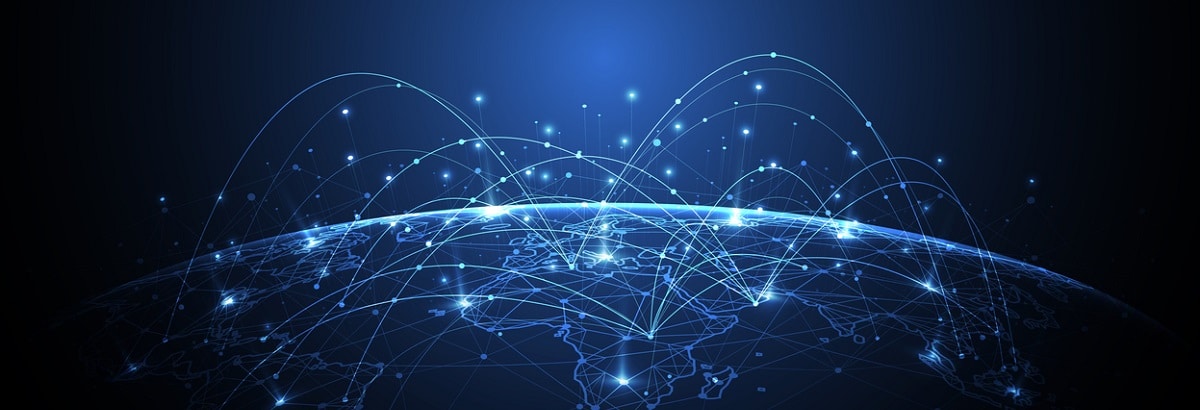Gonzalo Sanz Segovia | 30/10/2025
European Risk managers are today facing an environment where different threats are more deeply connected, and these connections boost the likelihood, impact, and complexity of these threats materializing. This requires a particularly integrated approach in terms of identifying, containing and governing them.
Risks have no place in sealed departments. A geopolitical conflict can trigger the acceleration of labor migration, changes in supply chains, complicate the response to an extreme climate event, or increase the possibility of cyberattacks against critical infrastructures. As noted in the 20th edition of the World Economic Forum’s Global Risks Report 2025, the approach taken to anticipating threat scenarios and their repercussion has evolved from being industry-focused to systemic.
We can address four main areas of concern due to their possibility of acting as risk catalysts in multiple segments:
– Geopolitics, with power imbalances, the establishment of large blocks, and fragmented geoeconomy;
– Human capital, with new professional trends, aging companies, and the expectations of those entering the labor market;
– Technological acceleration, with its consequent threats due to obsolescence, cybersecurity, or Artificial Intelligence biases;
– And, of course, climate change, with its extreme consequences, climate policies, or barriers to development.
Geopolitics: blocks and fragmentation
International configurations are increasingly fragmented, due to the rivalries between major powers that leverage economic measures as instruments of power and due to concerns regarding the security of strategic supply chains. The European Commission has included this reality in its economic security agenda, indicating that it increases the risks of pressure and supply of reserves.
Some of the threats in this area are related to the dependence on supplies due to exposure to unique suppliers of critical materials, such as energy, minerals, or semiconductors, among others. Likewise, regulation poses a risk due to the possibility of rapid changes in trade barriers and export controls that could paralyze investment or agreements. Operations in regions with high tension levels face a higher likelihood of disruptions and sanctions, posing an operational and reputational threat.
Human capital: the demographic dimension
Europe is facing an aging workforce in many sectors at the same time as a new generation enters the workforce with differing professional expectations. At the same time, skills supply and demand mismatches persist, and there continue to be many areas with specific talent shortages for certain sectors, as revealed by the latest OECD Employment Outlook.
One of the implications for risk managers is the sustainability of critical skills, due to a foreseeable obsolescence of internal know-how if new talent is not attracted, retained, and trained. Furthermore, a continuity risk exists, because vacancies in key positions – such as cybersecurity, operations, or infrastructure maintenance – increase operational vulnerability. Changes in the nature of the relationship between employer and employee also need to be addressed. Younger members of the workforce have different expectations regarding flexibility, future prospects, or ongoing training. This requires rethinking people management policies so that organizational resilience is preserved.
Growing technological acceleration
Rapid technological development has produced three critical vectors: obsolescence and dependence on legacy systems in critical infrastructures, the evolution of cybersecurity threats—such as attacks on logistics or public services—and the emerging risks associated with Artificial Intelligence models (biases, vulnerability due to data manipulation, or operational dependence).
Rapid technological adoption brings with it systemic risks due to possible technological failures. For example, a cyber incident with a critical provider can paralyze an entire supply chain. The accelerated integration of AI without adequate supervision causes biases, new sources of legal responsibility, and, at times, unexplained decisions.
The impact of climate change
Our climate is changing and impacting the world we live in. Heat waves, floods, and multiple extreme phenomena are occurring all over the planet. The Intergovernmental Panel on Climate Change (IPCC) and European agencies warn of an increase in the frequency and intensity of events and their cumulative effect. Moreover, adaptation and transition policies could generate short-term costs and inequalities between territories, which would complicate both public and enterprise resilience.
When we talk about transition risks, we refer to regulatory changes, taxes, tariffs, or market reconfiguration that impact business models, as detailed by the European Central Bank in its study, The intersection between climate transition policies and geoeconomic fragmentation.
No less important are the direct physical risks, such as logistics interruption, damage to infrastructure, or loss of raw materials. Or those related to development and vulnerability, where regions with lower adaptive capacity suffer the consequences more. According to the European Environment Agency, this can create migratory and social pressures that, in turn, feed back into geopolitical threats and market threats.
The interaction of risks
All these threats are threats in themselves, but also represent a danger due to the waterfall effect and the feedback loops they can create. To cite one example posed by the European Commission: a geopolitical shock of significant magnitude occurs, as a result, energy supplies are interrupted and this leads to inflationary pressures, which in turn, generate stresses in the workforce and cuts in training. What happens next? Operational risks and exposure to technological failures rise.
The European Environment Agency also explains how climate risks interact. In the case of an extreme event like a flood, data centers or logistics infrastructures may be compromised, leading to cyber incidents and service dropouts. All of this would have a domino effect on financial services and mobility. These are some of the most prominent triggers, but not the only ones. We mustn’t forget the global Covid pandemic, which affected all sectors, from politics (opposing positions on how to manage the crisis) to the economy, with generalized reductions in GDP around the world and social and labor impacts.
What can risk managers do?
And so, the question is: what can risk managers do? According to the European Commission, the OECD, the World Economic Forum, or the European Environment Agency, a series of specific measures can be adopted, such as establishing a systemic risk framework and scenario planning; developing a dynamic mapping of critical dependencies; investing in human capital and talent retention; improving cyber resilience by design; integrating climate threats into asset management; and fostering inter-organizational coordination and public-private participation.
Replicating past practices doesn’t work anymore, because the environment is becoming increasingly complex, risks can’t be addressed individually due to their interconnection and, as we’ve seen, the effects can cascade. A comprehensive approach is the most practical way to leverage experience and transform uncertainty into competitive resilience.





